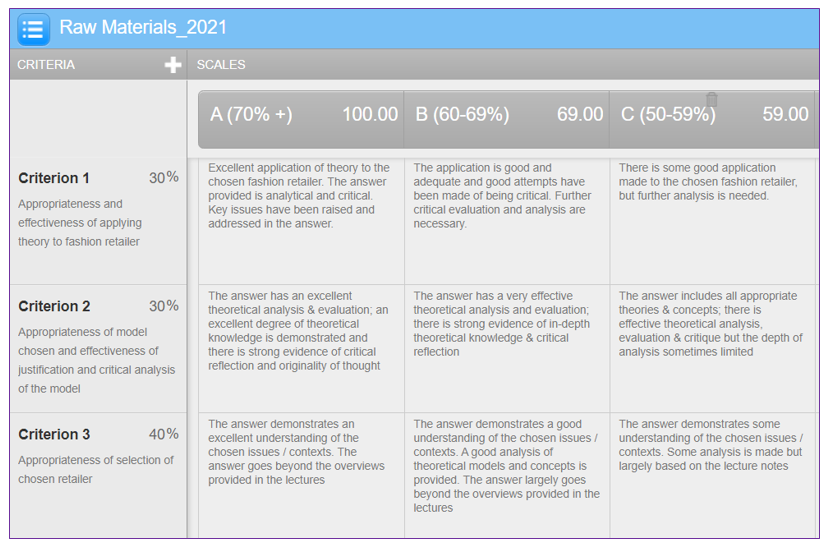Updated 01/07/2022
Rubrics and grading forms are useful when evaluating student work. Both are grading tools based on defined criteria and can be created while making an assignment or after a student has made a submission. As you add your Turnitin assignment, the settings allow you to attach an existing rubric that you have already created. OR
OR
You can launch the Rubric Manager and click on the 3-bar icon in the top left of the pop-up window to create a new rubric or grading form.
Depending on the type of assignment, there are four grading tools to choose from:
- Standard rubric: Used for numerical scoring. This type of rubric allows you to enter scale values and criteria percentages. The criteria percentages combined must equal 100% as each criterion represents a percentage of the student’s overall grade. The maximum grade value for this type of rubric will be the same as the highest scale value entered.
- Qualitative rubric: Used for providing feedback without the use of numerical scoring. The scale and criteria used for this type of rubric are more descriptive than measurable.
- Custom rubric: This can be modified to suit your grading needs. Descriptive scales and criteria can be entered while each rubric cell can be allocated its own point value, as well as written feedback.
- Grading form: Used for providing feedback with or without the use of numerical scoring or scaled criteria. The criteria used are more descriptive than measurable and each criterion is standard as opposed to having scaled levels, as in rubrics. Numerical scoring can be added for each individual criterion and these will be added together to create an overall grade.
*ALL rubrics are created in the same way with slight variations depending on their type.
Creating a standard rubric
1. Enter a name for your rubric by clicking on ‘Enter rubric name here’ in the top left of the Rubric and Form Manager (relevant to all rubrics).
2. Ensure the % icon is selected in order to access the standard rubric template. This should automatically be selected as it is the default Rubric Scoring option.
3. To edit the name, description, or percentage value of a criterion, click directly on the relevant field and begin typing. Press enter or click anywhere outside of the text field to finish editing.
4. You can add or delete extra rows and columns of the rubric (relevant to all rubrics).
5. To enter the scale title or value, click on the scale title or scale value and begin typing.
6. To enter the description for each cell, click on the cell, enter the description, and then click outside of the cell’s text field to finish editing (relevant to all rubrics).
7. Once the rubric is complete, click the ‘Save’ and ‘Close’ buttons at the bottom right of the Rubric Manager (relevant to all rubrics).
8. Your newly created rubric will now appear in the list of options in the Turnitin assignment settings; use the chevron to find it (relevant to all rubrics).
9. The rubric is now attached to the Turnitin assignment (relevant to all rubrics).
Next: Creating a qualitative rubric…









